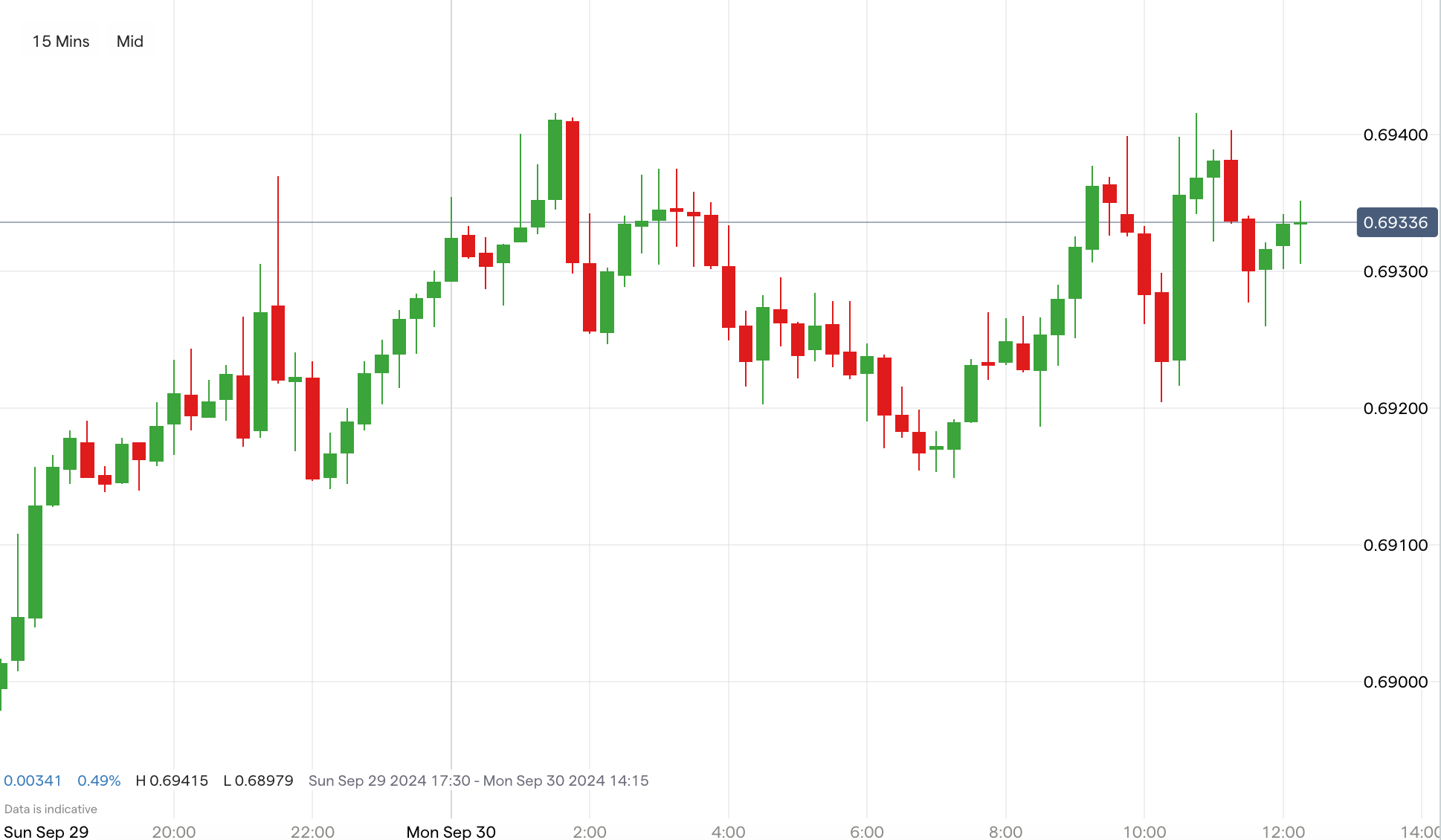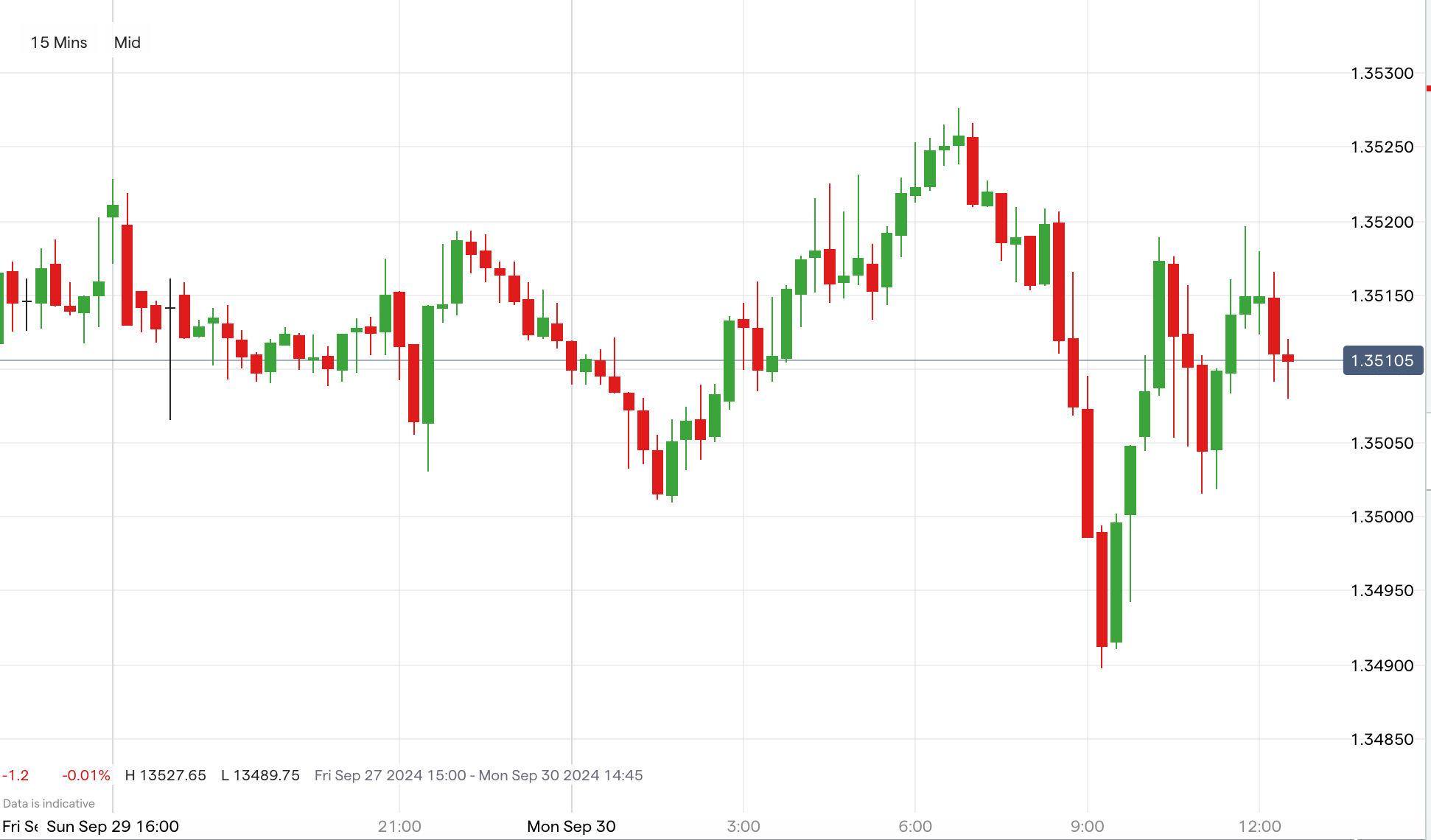Chinese stocks surge in record rally: CSI300, AUD/USD & USD/CAD price analysis
China's stimulus measures boost the CSI300 index by 30%, influencing global markets and the AUD's performance. Meanwhile, the USD/CAD pair reacts to potential Bank of Canada rate cuts amid economic stagnation.

Key points
- CSI300 index up 30% since February
- China's single-day stock gain was the largest in 16 years
- AUD reached a new high of 0.69415
- USD/CAD bounced back to 1.35276
- Analysts expect Bank of Canada rate cuts
CSI300 on Record Bullish Trend Post Stimulus Measure Announcements
With the CSI300 blue-chip index up almost 30% from February, it’s been a record year for Chinese stocks. Chinese stocks made their biggest single-day gain in 16 years this week amid the newly announced stimulus measures, the largest measures implemented since the pandemic. These plans include reserve requirement ratio cuts, reduced key lending rates, and lower loan prime rates. The aim of these policies is to counteract economic slowdown and boost the domestic economy. The surge in the CSI300 and following global market reactions highlight the impact of China's economic policies on world stocks and commodity prices, reflecting renewed optimism for economic recovery and growth.
Aussie Remains on Steady Climb Against US Dollar
With the continued struggle of the US dollar, the Aussie has shown a significant rally this Monday morning. Reaching 0.69415, this marks a new high for the Australian dollar since February 2023. Since China is Australia's largest trading partner, economic developments in China tend to directly impact the Australian economy and, consequently, the AUD. When the Chinese economy shows signs of growth or stability, Chinese equities tend to perform well.
AUD/USD price history

USD/CAD Bounces Back to 1.3500 as CAD Weakens
After a nosedive this morning below 1.34900, the USD/CAD pair made a steady return to 1.35276. This follows analysts’ bets of rate cuts from the Bank of Canada, and a more stagnant GDP growth in August. Market expectations for the BoC forecast a half-percentage-point interest rate cut on the horizon if economic conditions fail to improve. This potential monetary easing is seen as a response to the sluggish economic performance, aiming to stimulate growth and combat any emerging economic weaknesses. The anticipation of rate cuts often impacts currency movements, as lower interest rates can decrease the value of a currency by making it less attractive for investors seeking higher yields.
USD/CAD price history

What’s next?
With the CSI300 blue-chip index up almost 30% from February, Chinese stocks have reached their biggest single-day gains in 16 years following new stimulus measures. This bullish trend is forecasted to continue, likely influencing global markets and commodity prices. Given the Australian dollar's record rally to 0.69415 and its strong correlation with China's economic performance, the AUD/USD pair is likely to maintain its upward momentum. Continued Chinese stimulus measures and economic recovery could further boost the Australian dollar. However, traders should watch for any shifts in US monetary policy or unexpected economic data from China, which could impact this trend. The USD/CAD pair's bounce back to 1.35276 is likely driven by expectations of rate cuts from the Bank of Canada amid stagnant GDP growth. If the BoC proceeds with a half-percentage-point interest rate cut, the Canadian dollar may weaken further, potentially pushing the USD/CAD pair higher. However, any improvement in economic conditions or stronger-than-expected GDP data could stabilize or strengthen the CAD, affecting this upward trend.
How to trade US dollar
- Open an account to get started, or practice on a demo account
- Choose your forex trading platform
- Open, monitor, and close positions on USD pairs
Trading forex requires an account with a forex provider like tastyfx. Many traders also watch major forex pairs like EUR/USD and USD/JPY for potential opportunities based on economic events such as inflation releases or interest rate decisions. Economic events can produce more volatility for forex pairs, which can mean greater potential profits and losses as risks can increase at these times.
You can help develop your forex trading strategies using resources like tastyfx’s YouTube channel. Our curated playlists can help you stay up to date on current markets and understanding key terms. Once your strategy is developed, you can follow the above steps to opening an account and getting started trading forex.
Your profit or loss is calculated according to your full position size. Leverage will magnify both your profits and losses. It’s important to manage your risks carefully as losses can exceed your deposit. Ensure you understand the risks and benefits associated with trading leveraged products before you start trading with them. Trade using money you’re comfortable losing.
